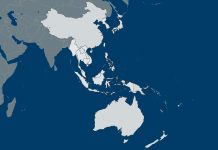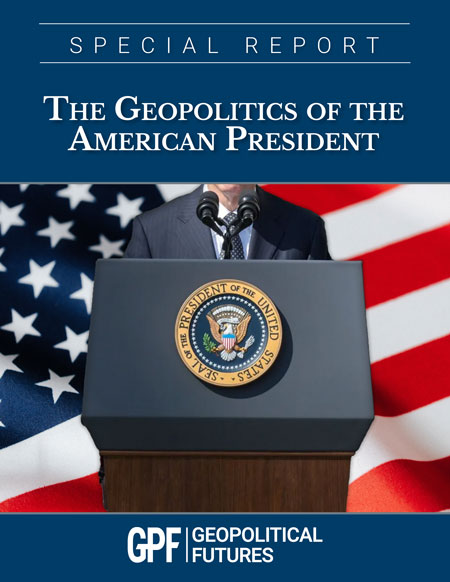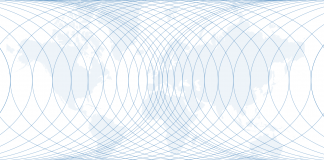Europe was the primary battleground of the Cold War. NATO adopted a defensive strategy because it saw no value in conquering Eastern Europe and Western Russia. The Soviets, however, had an interest in securing the European peninsula to secure its western frontier and to take advantage of Western European technology and naval capabilities. Moscow could never launch an attack though. Its western satellites were unpredictable. The long logistical line needed to support an armored offensive was both uncertain and vulnerable to air attack. In addition, the Soviets did not know what exactly would trigger an American nuclear response. Risking a nuclear exchange was not worth any possible advantage that could be gained from a full-scale offensive. So for over 40 years, there was a stalemate in Europe.
The Soviets incurred costs that could not be sustained as they limited economic development. Nor could they modify their military posture without significant political consequences at home or in Eastern Europe. Thus they moved to supplement their position in Europe with a strategy of indirection. The core of this strategy was to create low-cost threats to American power that the United States had to respond to and that forced the U.S. to disperse forces and invite political blowback.
The first major example was Korea, where the Soviets encouraged both the invasion of the south and, later, Chinese involvement. There were many calculations concerning the invasion of South Korea by Russia and China, but in the end it created a problem for the United States: If it declined combat, its credibility among allies would be lost, and if it engaged in combat, it would divert forces to a battlefield in which it had little interest beyond defending its own credibility. The Korean War indeed diverted assets from Europe and raised questions over Washington’s judgment and ability to reinforce in the face of a Soviet attack. The war cost President Harry Truman a great deal of popularity, forcing him to not run in 1952 and helping embolden McCarthyite undermining of confidence in the government.
Korea was the essence of the indirect attack. The cost for the Soviets was low, the political and psychological consequences high. It was not intended to break American power but to weaken and diffuse it.
The Soviets created many indirect problems for the United States in Africa, Latin America and, above all, Vietnam. The watchword in the U.S. was credibility, and that was the force compelling the U.S. into Vietnam: Ceding South Vietnam would weaken the credibility of the United States in Europe, the main theater of operations. So the Soviets, along with China, provided material to the North Vietnamese in a bid to weaken the U.S.
The Americans faced Soviet-backed insurgencies or regimes all over the world. They also faced Soviet-backed terror groups in Europe and elsewhere. U.S. intelligence was forced into a global stance rather than maintaining a laser focus on the Soviets. U.S. actions in these countries resulted in humiliating failures and catastrophic successes, where the political cost vastly outweighed the threat. The Soviets remained in a static position on the main area of combat while taking minimal risks to draw the United States out of position on the main battle. They ultimately failed to turn indirection into a winning strategy, but they prevented the U.S. from concentrating its forces squarely on them.
The Chinese and Russians are both in this position today. The Chinese navy has its back against the wall in China’s east coast and a string of nations a few hundred miles away. It must break out, but it has little room for maneuver, regardless of the hardware it has built. The Chinese may or may not succeed, but the outcome is too important for a nation to risk defeat.
The Russians are struggling to regain borders that they had more or less held since the 18th and 19th centuries. Threatening new territories is one thing. Trying to recover lost territory is another, especially when the territory is vast, as it is from Ukraine to Central Asia. What was lost in a year will take generations to recover. It’s more vulnerable than it appears. It has lost so much that regaining Eastern Europe is a dream, and it must resist American attempts to contain it on its current line.
When a main force cannot be applied with confidence, an indirect strategy is needed. There has been talk about a Chinese-Russian alliance. It is difficult to imagine how the two countries might coordinate their militaries, and an economic alliance has no meaning given Russian economic weakness and China’s power. But one alliance is very conceivable: a covert alliance meant to divert and diffuse the main enemy of both, the United States, and thereby reduce Washington’s pressure on them.
China and Russia have never been particularly close and in fact were enemies in the 1960s. They did, however, collaborate in the Korea and Vietnam wars, the latter of which hurt the United States. Collaboration was not decisive in either country’s long-term future, but it released some Western pressure and created some opportunities. They have had some experience in indirect warfare against the United States.
With this kind of experience in indirect warfare, there are many areas in which one or both might act. The Chinese have an economic strategy designed to tie recipients of investment into political relations with China. The flaw inherent to this strategy was one the United States encountered after World War II, when Soviet-sponsored regimes simply nationalized U.S. assets. U.S. interests had many assets and were heavily invested in Cuba, for example. But ownership is a piece of paper that can be quickly abolished by the arrival of troops. Thus China may “own” the Panama Canal, but it does so without the objection of Washington. If it ever objects, a battalion of Marines can change everything.
What the Chinese and Russians need to do is to create politico-military insurgencies and governments spread around the world in the hopes that the U.S., maintaining an alliance against China and Russia, might be forced into responding. The closer to the United States, the greater the need to respond. Hence why Latin America was fertile ground for the Soviets. If the U.S. preempts, it starts accruing military and political costs. If it does not, the danger is massive political costs.
A strategy of indirection is a strategy of opportunism. Intelligence teams are inserted into places that are already hostile to the U.S. The key is to create so many perceived threats and unknowns that U.S. intelligence is forced to counter, but countering all of them is nearly impossible even if it were politically palatable.
The Chinese and Russians face the same problem in principle. Conventional military options against the United States might work, but there is a real possibility they won’t, and neither can afford the internal consequences of failure. They cannot find satisfactory settlements with the Americans and are therefore left with a strategic position that the U.S. might take advantage of. This scenario must be avoided, so an indirect strategy is obvious. The Chinese economic strategy is fine in the short term, but it is highly vulnerable to changes in government. The creation of anti-American states is critical. A strategy of indirection is more prudent, and Russia and China are prudent nations. They have to be.





 The Geopolitics of the American President
The Geopolitics of the American President